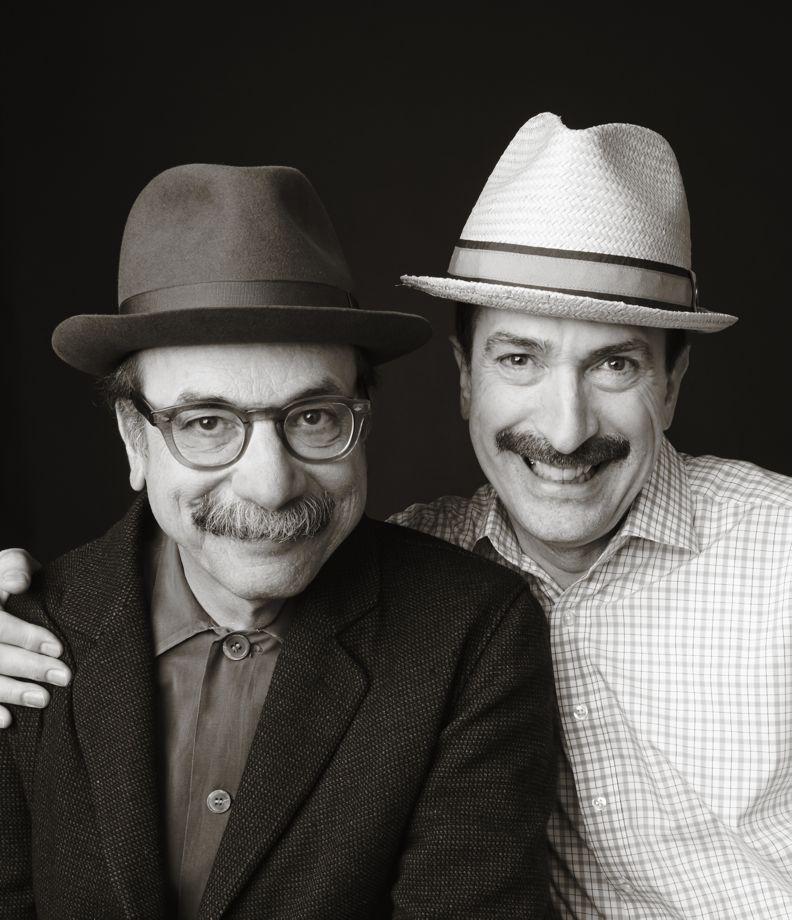Tom and David Kelley of the award-winning Palo Alto-based global design firm IDEO have been helping private and public sector organizations innovate, grow and bring to market new ideas for 35 years; projects include Apple’s first computer mouse and a stand-up toothpaste dispenser for Procter & Gamble. In the Kelleys’ new book, Creative Confidence: Unleashing the Creative Potential Within Us All, the brothers recount anecdotes from their work at IDEO and at Stanford’s d.school (the institute of design created by David Kelley), and offer tips to help everyone build creative muscle in an era when success depends on innovation in every field. Here at the Eye, the authors share an excerpt from the book that discusses what they learned from their collaboration with Steve Jobs, their friend and colleague for three decades.
With creative confidence comes the desire to proactively guide the course of your life, or your organization, rather than be carried along on the prevailing winds. Roger Martin, dean of the University of Toronto’s Rotman School of Management, once told us that what stuck out to him about designers is that they always act with intention. While others may unconsciously go with the default option, design thinkers make everything a conscious and original choice: from how they arrange their bookshelf to how they present their work. When they look around the world, they see opportunities to do things better and have a desire to change them. Once you start creating things, whether it’s laying out a new garden or starting a new company or writing a new piece of code, you start to realize that everything has that intention behind it. Everything in modern society is the result of a collection of decisions made by someone. Why shouldn’t that someone be you?
When you unleash your creative confidence, you start to see new ways to improve on the status quo—from how you throw a dinner party to how you run a meeting. And once you become aware of those opportunities, you have to start seizing them.
To us, that focused “intentionality” was one of Steve Jobs’s defining characteristics. David met Steve back in 1980 when we designed the first Apple mouse. They became friends during a dozen subsequent projects for Steve’s ventures at Apple, NeXT, and Pixar. Steve never took the path of least resistance. He never accepted the world “as is.” He did everything with intentionality. No detail was too small to escape his attention. He also pushed us beyond what we thought we could do—we experienced his “reality distortion field” firsthand. He just kept raising the bar, even when it seemed unreasonable. But we would try, and we would get three-quarters of the way there, which was always farther than we would have gotten by ourselves.
After Steve was forced out of Apple and was planning the startup that would become NeXT Computer, he stopped by David’s office one day to talk about his vision for the new machine. Always seeking Zen simplicity, Steve asked David, “What’s the simplest three-dimensional shape in the world?” David was sure that it was a sphere. But that didn’t matter, because the answer Steve was looking for was a cube. And so began our project of helping Steve with the engineering design of his cube-shaped NeXT computer.
During that intense project, Steve often called David at home in the middle of the night (in the era before e-mail and texting) to insist that we make some change. What kind of pressing issue couldn’t wait until morning? One night, the call was about whether the plating on some screw on the inside of the cast magnesium cube should be cadmium or nickel. David’s response was something like “Jeez, Steve, it’s on the inside of the box.” But Steve still cared—and we of course changed it. We don’t know if any NeXT customer ever cracked open the machine and saw those perfectly plated fasteners, but Steve left no such details to chance.

Image courtesy IDEO
Steve had a deep sense of creative confidence. He believed—he knew—that you can achieve audacious goals if you have the courage and perseverance to pursue them. He was famous for his exhortation to “make a dent in the universe,” which he expressed this way in a 1994 interview:
The minute that you understand that you can poke life and actually something will…pop out the other side, that you can change it, you can mold it, that’s maybe the most important thing…Once you learn that, you’ll never be the same again.
Steve’s message was that we all have the ability to change the world. That was certainly true of Steve, a visionary who impacted so many people’s lives and urged us all to “Think Different.”
From Doug Dietz to Steve Jobs, all of the creatively confident people we’ve crossed paths with have found a way to apply extraordinary energy and exert remarkable influence. And we know that as you gain creative confidence going forward, you will have the chance to make your own dent in the universe. Start with a growth mindset, the deep-seated belief that your true potential is still unknown. That you are not limited to only what you have been able to do before.
Reprinted from the book Creative Confidence: Unleashing the Creative Potential Within Us All by Tom Kelley and David Kelley. Copyright 2013 by David Kelley and Tom Kelley. Published by Crown Business, an imprint of the Crown Publishing Group, a division of Random House LLC, a Penguin Random House Company.

Photo by Magnolia Photo Booth Co.
